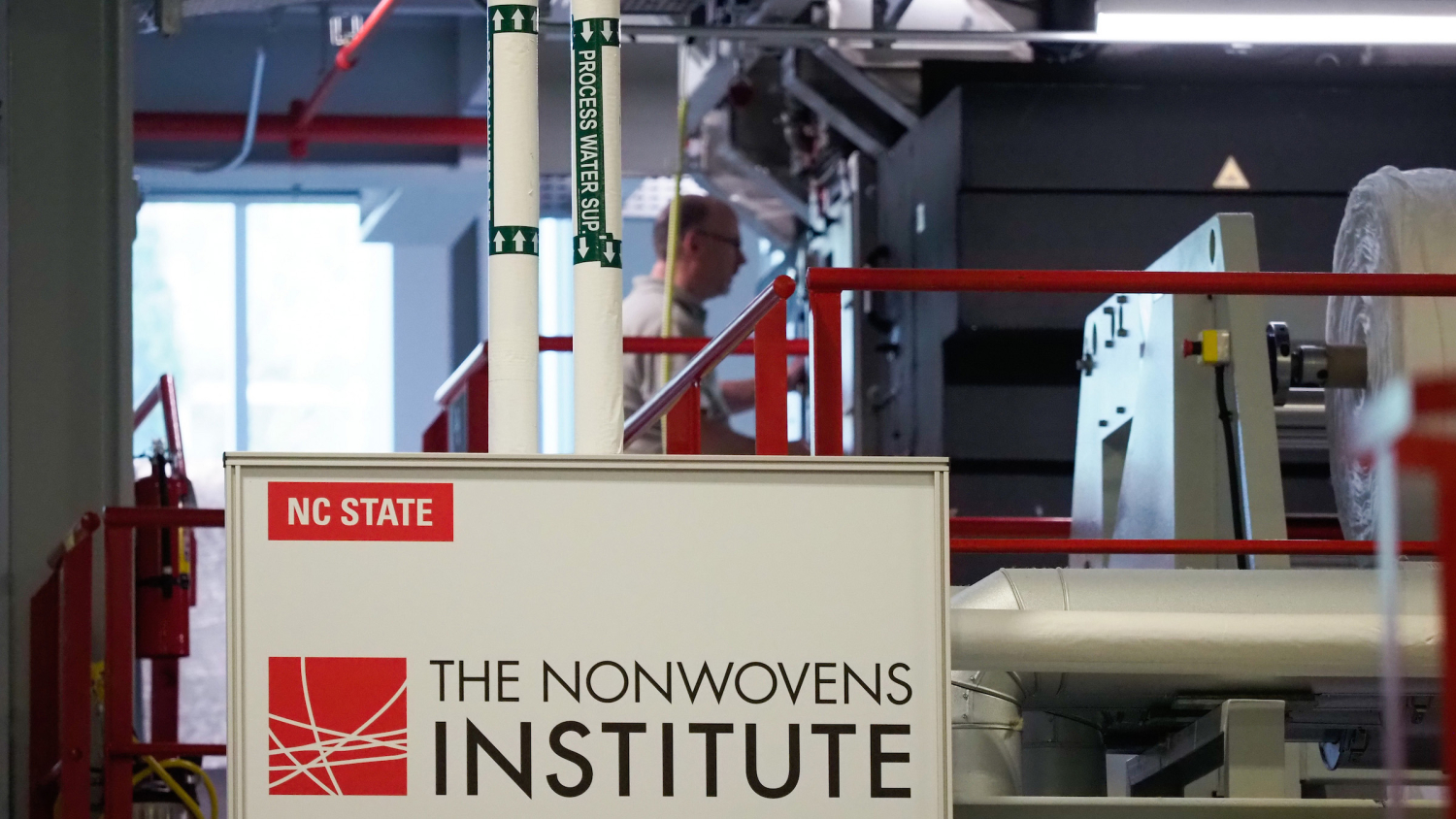Collaborative Research to Help Wildland Firefighters Survive

As firefighters in California unite to battle wildfires fueled by extreme heat, researchers from NC State’s Wilson College of Textiles (COT) and College of Natural Resources (CNR) have joined forces to look for ways to better protect them under the worst circumstances.
A team in the Textile Protection and Comfort Center (T-PACC) is researching how to improve the portable shelters the firefighters are required to carry. The tent-like structures are firefighters’ last defense and are only deployed when wildfires have them surrounded. Made of fiberglass and silica fabrics with aluminized outer surfaces, they are designed to provide some protection from temperatures as high as 2,000 degrees as the fire passes over them.
But when 19 firefighters died during the 2013 Yarnell Hill fire in Arizona, limitations in the current fire shelter were exposed. In 2014, T-PACC led by Dr. Roger Barker, director, received a three-year FEMA Assistance to Firefighters Grant to develop novel materials technology that have the potential to significantly improve on existing fabric technology in fire blocking, weight (the current shelter weighs 4 pounds) and durability. The Center is also establishing testing protocols. The goal: optimize the shelters’ performance and raise the probability of firefighter survival.
“The expertise of T-PACC in advanced materials and fabrics combined with firefighter experts from the forest service laboratories provided a strong team to investigate new shelter designs,” said Dr. David Evans, R&D technology research specialist who works with the Department of Homeland Security, FEMA/ Assistance to Firefighters Grants. “T-PACC has very specialized equipment and technical talent to help advance the science of protecting firefighters from injury while improving the comfort of their protective gear.”
While T-PACC has the been testing the existing fire shelters and some new materials in a large-scale wildland fire simulator at the Wilson College of Textiles, the team was able to see how their testing equipment would withstand more realistic conditions when they collaborated with CNR June 17. CNR’s Forest Management majors conducted a prescribed burn in north Durham County as part of a nine-week intensive Summer Camp. The burn was led by CNR’s Elizabeth Snider and other professionals, mostly CNR alumni, from the North Carolina Forest Service, North Carolina State Parks and The Nature Conservancy; Robert Mickler, lead instructor with the National Wildfire Coordinating Group; and Dr. Joseph Roise, professor of forestry and operations research and an investigator on T-PACC’s FEMA grant.
The exercise allowed the research team to practice and refine the experimental protocol that they plan to follow across the country and out west over the next 12 months as they test new materials in larger fires.
“Textiles has great facility to develop and test advanced material fabrics but they still need to be tested in the field. The fact that the number of wildland firefighters who die each year is increasing as temperatures rise is why this is such an important research project. It is a natural overlap of Textiles, forest and natural resource management and public safety,” said Roise.

John Morton-Aslanis, a T-PACC research associate, and Dr. Alex Hummel, a T-PACC research assistant professor, secured the shelter in the area of the controlled burn. Placed in and around it was testing equipment as well as items designed to inform the team regarding the potential of a wildland firefighter to survive inside the shelter. This included:
- Temperature measurement equipment inside and outside of the shelter
- Water bags wrapped in a standard Nomex® fire suit to simulate a person inside the shelter
- Marshmallows inside of a Nomex® bag to provide another frame of reference for the temperature inside; marshmallows melt at 120 degrees Fahrenheit, while human skin starts to blister at 130 degrees Fahrenheit
- Cameras to provide a look inside the shelter and outside at the testing area
While rain that fell in the days prior to the exercise increased fuel moisture limiting fire intensity, the experiment was a success, providing information on how to improve future tests and bringing together NC State’s best strengths across colleges to tackle a life-saving challenge.
“Whenever you work on real-world problems, it helps to have a great multidisciplinary team. We absolutely needed to have the collaboration with CNR in order to do this,” said Barker. “We’re the textile folks. We know the fibers and materials and lab tests. They know the science of fire as it applies to wildland fires.”
- Categories:


